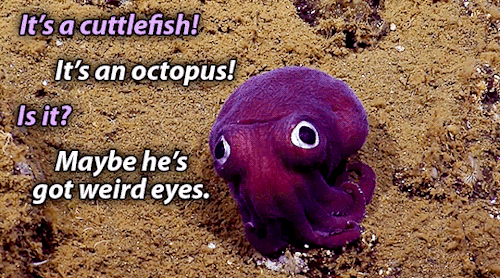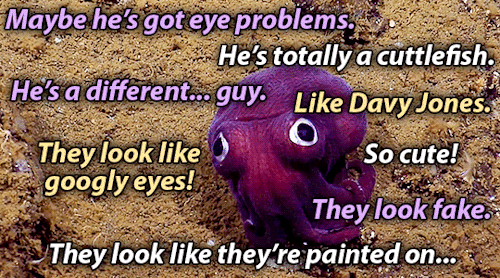Cephalopod - Blog Posts
I think becoming a cephalopod would fix any and all problems I face in life....wistful sigh! One can dream! Or one can also just Decide to Be a Squid Now. I think I'll choose that option-
🦑🐙🦑~Joy and Whimsy~🐙🦑🐙





Googly-eyed Stubby Squid | Nautilus Live + their commentary

He is on the council of many arms, but still not a master.






Key West daytrip, 2/11/25.
I went fossil hunting down at the Warren (in Folkestone, Kent, UK) on Thursday last week. These are some of my favourite finds from the trip (I washed them up at home).


Fossil hunting is great fun. If you live in the UK, and fancy giving it a shot, then there are some really handy websites that you should check out. https://ukfossils.co.uk/ and http://www.discoveringfossils.co.uk/fossil-locations-of-great-britain/
If you don't live in the UK but still want to give it a go then I would recommend looking for local fossil hunting clubs, societies and websites. Failing that you should try to look for areas where sedimentary rocks are being eroded. For instance, cliffs by the sea, rivers, old quarries, etc.
Just make sure you don't trespass or go anywhere too dangerous. For instance, if you are fossil hunting under cliffs at the beach, don't get to close to the cliffs (falling debris and cliffs collapsing) and plan around the tides (you don't want to get cut off).
Why Octopuses Could Never Disappoint
These cephalopods, who telegraph their moods by color changes and solve problems by using tools, have surprised me again and again.
And now it’s happened again. An octopus has astonished me.
This time, it’s a common octopus caught on camera in South African waters by a dive team for the documentary Blue Planet II, currently airing on BBC America in the United States.
The action is dramatic. A pyjama shark seizes the octopus. Just as the situation begins to look dire, the octopus stuffs the shark’s gills shut using its sinuous arms, making it impossible for the shark to breathe — until the shark releases it.


Googly-eyed glass squid
Teuthowenia pellucida
The Googly eyed squid is a rare oddity that is found in the southern hemisphere. It has a large, spherical head that is filled with water and teeny, tiny tentacles that help propel it through the water. If it comes across a predator, it deflates its head and draws its tentacles into its cavity. On the other hand, it may also fill the cavity with water to increase its size, and intimidate the predator. If all fails, it will ink and try to escape through the darkness. Furthermore, baby squids can be found at the surface (0-600m); then slowly migrate downwards as they mature into adults (1600-2500m).
Photo credit: http://animaladay.blogspot.com/2011/07/googly-eyed-glass-squid.html
https://faunafabula.tumblr.com/post/5999675353/googly-eyed-glass-squid-teuthowenia-pellucida


Jewel Squid
Histioteuthis heteropsis
The Jewel Squid is covered in color-changing photophores that resemble sparkling gem stones. They also have a light-red coloration and are about 20 cm in length. They display a unique behavioral adaptation called diel migration. During the day, they stay at depths around 400-1200 m, and then surface during night (0-400m). This behavioral pattern is designed maximize feeding at night, and avoid predators during the day. The primary predator of the Jewel Squid is the Sperm Whale.
Photo credit: https://www.pinterest.com/pin/722827808920240115/
https://twitter.com/theoctonation/status/1168516522270253056


Piglet Squid
Helicocranchia pfefferi
The Piglet Squid is a very small and delicate, transparent squid. It is found at depths between 400 to 1000 m. It has an unique siphon that is used for jet propulsion and it resembles a pig muzzle. The young piglet squids tend to live close to the surface, and steadily migrates downward as they grow. This behavior is called ontogenetic migration.
Photo credit: http://photo.cctv.com/2019/07/23/PHOAKMEBh8xJRaHXEUIGx8kE190723.xml
https://www.ourbreathingplanet.com/banded-piglet-squid/

Glass Octopus
Vitreledonella richardi
The Glass Octopus spend its entire life in the midwater section of the ocean and found at depths between 200m to 2000m. Even though it has no protection from predators, it achieves perfect transparency. The only part of the Glass Octopus that is visible is its digestive gland. However, the digestive gland is placed vertically to minimize detection. In addition, I find this octopus to be super cute!
Photo credit: https://www.mynumer.com/forums/topic/499/invisible-animals/view/post_id/859

Black- eyed squid
Gonatus onyx
The Black-eyed Squid is roughly over one foot (35 am) and is found at depths as deep as 2500m. The female Black-eyed Squid works fiercely to protect her babies, by carrying around a patch of egg for six to nine months. When the eggs hatch, 2000 to 3000 babies are released into the ocean. However, this makes her vulnerable to predators.
Photocredit: http://tolweb.org/Gonatus+onyx/19769


Cockatoo Squid
Galiteuthis phyllura
The Cockatoo squid is a highly-specialized oddity of the deep ocean and found at depths between 300 to 1400 m. It is completely transparent, except for its eyes. It also has bioluminescent photophores that are directed downward: this makes it difficult for deep sea predators to see the Cockatoo Squid. It was named after the Cockatoo because it holds its tentacles above its head, resembling the bird. The Cockatoo squid can also get fairly large with adults reaching lengths of 2.7 meters (over 6 ft.)
Photocredit: https://www.americanscientist.org/article/at-home-in-the-dark
https://www.pinterest.com/pin/28710516347382519/

Vampire Squid
Vampyroteuthis infernalis
Even though the Vampire Squid is named after a notorious monster, this gentle creature does not live up to its name. It is only a foot long and occupies depths between 650m to 1500m in the deep ocean. Unlike other squids, it has reduced musculature and collects particles in the water column. However, it is capable of huge bursts of speeds. It uses bioluminescence to confuse both predators.
Photo credit: https://ocean.si.edu/ocean-life/invertebrates/vampire-squid-hell


Glowing sucker octopus
Stauroteuthis syrtensis
The Glowing Sucker Octopus can be found at 2500 m in the deep ocean. This unique creature has two fins that look similar to elephant ears. They move elegantly through the water by moving these fins and contracting their mantle. Evidence of this creature has only been spotted in the Atlantic Ocean.
Photo credit: https://octolab.tv/species/glowing-sucker-octopus/
https://ferrebeekeeper.wordpress.com/2011/03/14/glowing-sucker-octopus/
Fuck zodiac signs, what’s your favorite cephalopod?
I’ll go first: either the blue-ringed octopus, the mimic octopus, or the colossal squid.
Bonus points for it being a cephalopod pokemon.



Fakemon #24-25-26 - Marijell, Matrimoon, Stygitux
Keep reading
Inspired by the other post, could we get a non-binary flag from an flamboyant cuttlefish?
Sure thing! I was already planning on doing the ace flag from the image, so you’re in luck!
(credit to @herpsandbirds for the pic (link to post))
Pride Flags Colorpicked from a Flamboyant Cuttlefish



Lesbian Flag Colorpicked from This Cuttlefish
(I used the last image for this btw)

After showing off my cresties color changes now I wonder what your favorite color changing critters might be?
Color Change:
Well, hands down, it would have to be cephalopods. They have amazing color change capabilities... especially the cuttlefish!


Broadclub Cuttlefish (Sepia latimanus), family Sepiidae, found in the Indo-Pacific region
These images, of the same individual, were taken just seconds apart from each other.
photographs by Nick Hobgood

Reaper or Red Cuttlefish (Sepia mestus), family Sepiidae, Cronulla, New South Wales, Australia
photograph by John Turnbull



Giant Cuttlefish (Sepia apama), family Sepiidae, found along the southern coasts of Australia & Tasmania
photographs by Lawrence Scheele
Tricker treat!
Happy SAMHAIN!!!


Seven-arm Octopus (Haliphron atlanticus), family Alloposidae, in the deep sea of the coast of southern California, USA
This is one of the largest octopus species, with an estimated total length of 3.5 meters (11 feet) and a mass of 75 kg (165 lb)
This octopus does have 8 arms, but the hectocotylus (a specially modified arm used in egg fertilization) is coiled in a sac beneath the right eye, and is not easily seen.
This species is rarely seen by humans.
photographs via: Schmidt Ocean Institute



"Fishing" you a happy Valentine's Day!
part 4/4 of the fish valentine cards I drew for some friends




"Fishing" you a happy Valentine's Day!
part 3/4 of the fish valentine cards I drew for some friends

fishies (and some cephalopods)
Idk about y’all but valentines memes have been my favorite part of the holiday since I was an inappropriately young child on the internet
So I made some cephalopod themed ones for your enjoyment <3










These puns are ones that did not make the cut for our actual Valentine’s Day cards shown in the last image
Purchase them at squidfacts.bigcartel.com <3



